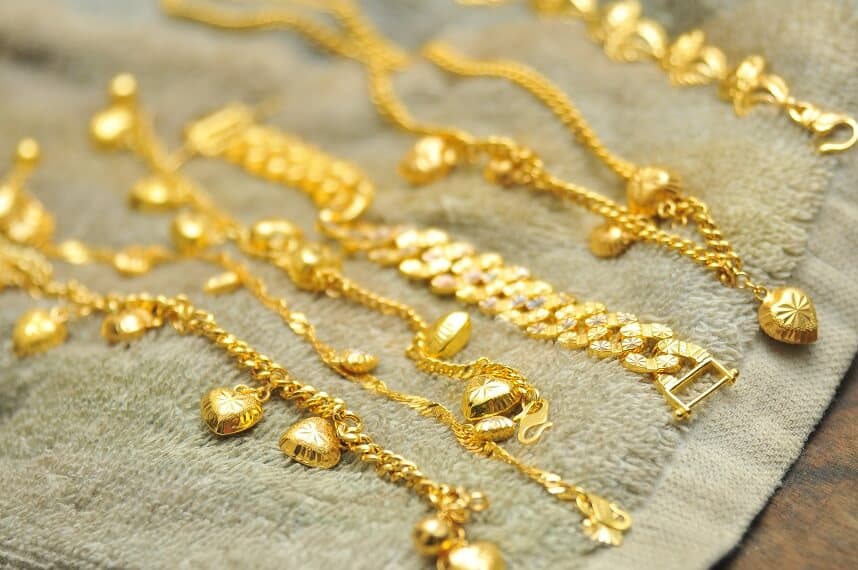Gold has adorned the pages of history for over 6,500 years. Prized for its aesthetic, versatility and durability, gold remains one of the most precious metals in jewellery today.
But there’s gold jewellery, and there’s OM Gold jewellery.
If you’re new to gold jewellery or looking for a perfect piece for that special someone, keep reading for a simplified guide to gold jewellery.
In this guide:
- What do “gold karats” mean?
- The difference between 916, 999, 22k and 24k gold
- How rose gold and white gold are made
What do gold karats mean?
One of the first things you’ll notice about gold jewellery is the word “karats”, often shortened to “k”.
Karats refer to the purity of gold on a scale of 1 to 24. Twenty-four-karat gold, the purest in existence, typically isn’t great for jewellery because it’s soft and prone to scratching or denting. Pure gold is better for bullion and collectible coins.
Alloying pure 24k gold with other metals enables jewellers to make custom pieces that last. High-quality jewellery generally uses 22 gold karats, meaning 22 of the 24 parts are pure gold.
Low-purity jewellery (10-karat to 18-karat), although cheaper, maxes out at 75% gold.
You can read more about gold karats in our guide to the different types of gold karats and their meaning.
Tip: Karat (with a K) refers to gold purity, while Carat (with a C) measures the weight of diamonds and gemstones.
916 gold and 999 gold
When shopping for gold jewellery, you might also see the purity expressed as 916, 999, or another three-digit number.
These numbers are simply another way to indicate the gold’s purity, with 1000 representing 100% gold.
You can even translate the number into a karat rating if you’re a maths whiz. But we’ll make it easy.
Rating |
Karat |
Gold purity |
| 999 | 24k | 99.9% |
| 916 | 22k | 91.6% |
| 750 | 18k | 75.0% |
| 585 | 14k | 58.5% |
| 375 | 9k | 37.5% |
Rose gold and white gold
Gold is naturally yellowish in colour. High-purity jewellery such as 22k or 916 gold will be more yellow than cheaper 14k pieces.
Mixing pure gold with other precious metals offers strength and aesthetic benefits in exchange for purity. In the case of white gold and rose gold, those alloying metals can add an extra-special something for a unique piece.
How is white gold made?
White gold is made by combining pure gold with white metals such as palladium or silver. Sometimes, white gold has rhodium plating that provides white colouring and makes the jewellery hypoallergenic.
Where does rose gold get its blush?
Rose gold is made by adding copper to pure gold. The quantity added will determine the jewellery’s karat rating.
Copper’s strength imbues rose gold with outstanding durability. However, some people react to copper, so if you’re buying rose gold jewellery for a partner, make sure they’re not allergic.
Did you know: Plating yellow gold with other metals can create a rainbow of jewellery. Green gold contains silver, blue gold contains iron, purple gold has aluminium, and black gold is electroplated with black rhodium.
What does all this information about gold karats mean?
Put simply, the more karats, the purer the piece. However, pure 24-karat gold is too soft for everyday wear, which is why OM Gold jewellery is made with 22-karat gold.
As well as our range of high-quality Indian and Arabic jewellery, OM Gold creates one-off custom pieces that your loved ones will treasure for a lifetime.
Discover our gorgeous gold collection, available in Perth and Brisbane.

